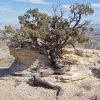Ceremonials are ritual, sacred, or spiritual practices found in many cultures around the world, including the Pueblo and Navajo in the American Southwest. Pueblo ceremonials are not homogeneous among the various Pueblo groups, but are instead a shared attribute among them, and includes ceremonials associated with their kiva societies. Pueblo kiva societies nurture the traditions affiliated with specific kachina, who are ancestor spirits and spirits associated with natural phenomena.
In the Navajo tradition, ceremonials are performed by a singer, also known as a hataałii, to address symptoms of imbalance that manifest as mental or physical illness. Navajo cures are targeted at body, mind, and spirit, and can last anywhere from one to nine days. Navajo ceremonials include chants, songs, prayers, lectures, dances, sweat baths, prayer sticks, and sand paintings.










